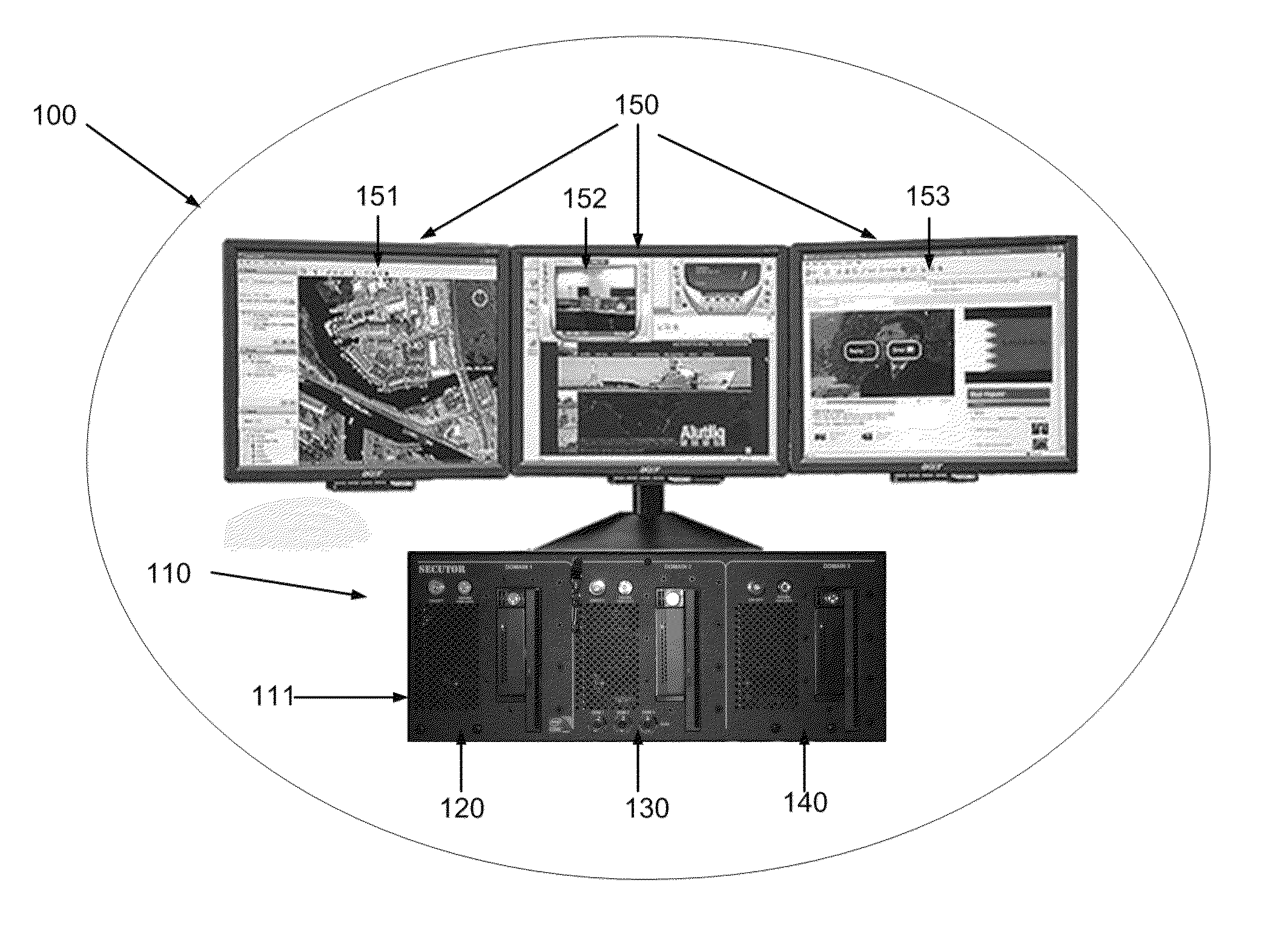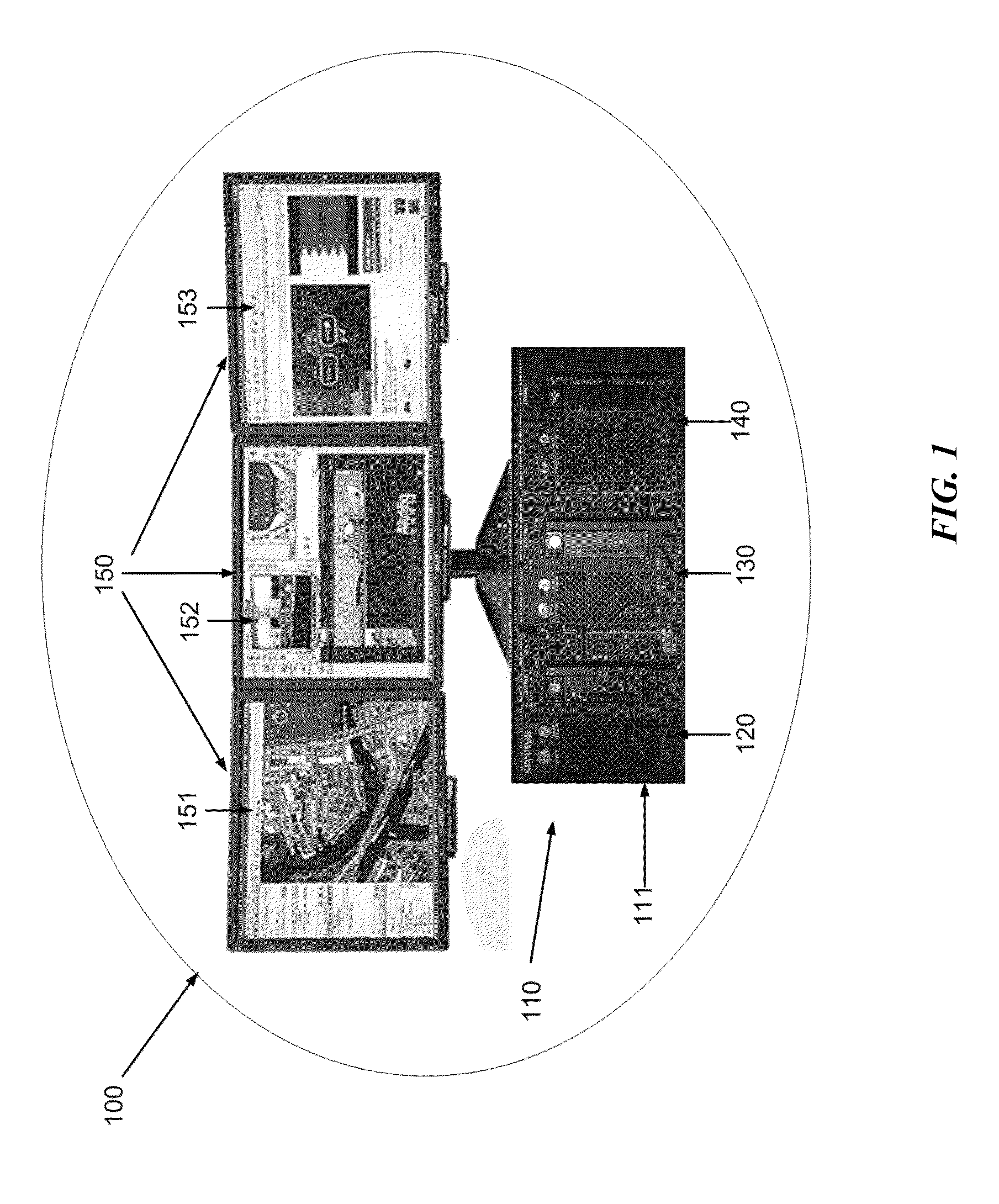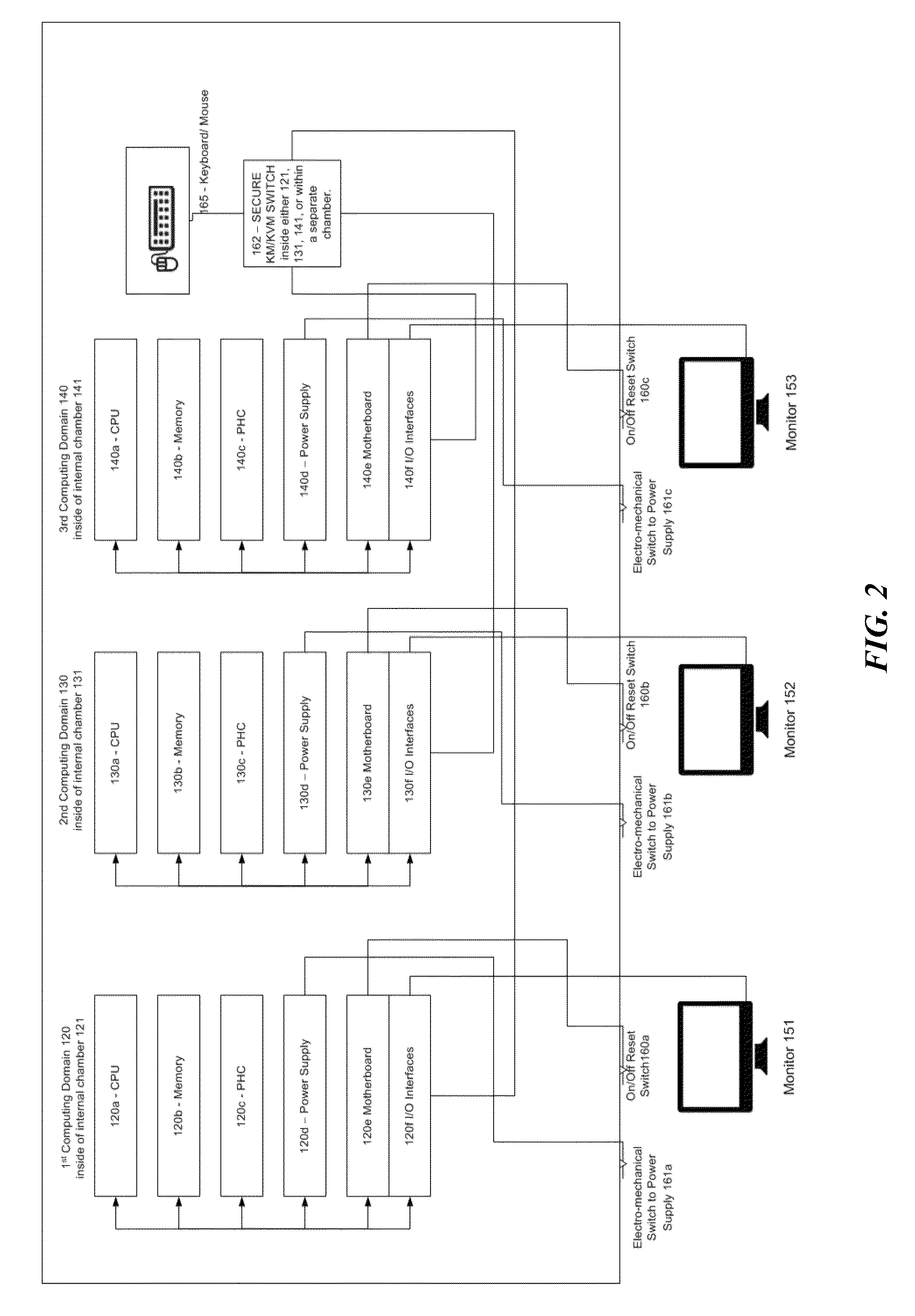Multi-domain secure computer system
a computer system and multi-domain technology, applied in the field of computer systems, can solve the problems of not meeting the security standards, not providing the required protection from emf, and not offering a multi-domain computer system, so as to facilitate the access to the internal components of the chassis
- Summary
- Abstract
- Description
- Claims
- Application Information
AI Technical Summary
Benefits of technology
Problems solved by technology
Method used
Image
Examples
Embodiment Construction
[0061]Referring now to the drawings, in which like numerals represent like elements, exemplary embodiments of the present invention are herein described.
[0062]FIG. 1 illustrates an exemplary embodiment of a multi-level security (MLS) computing system 100, making use of the MLS computer or computing unit 110. The system 100 comprises a multi-level security computer or unit 110 in a single chassis 111, and is generally included with display system 150. Chassis 111 defines a plurality of internal chambers 121, 131, 141 (shown, e.g., in FIG. 5) within which are a plurality of computer domains, shown in this embodiment as computer domains 120, 130, 140. The chassis 111 may be constructed from lightweight, high strength material, which is also highly conductive of electromagnetic energy, such as aluminum.
[0063]As noted above, all chassis components are preferably constructed of principally the same material with common electrical and magnetic conductivity properties, or a coating over the...
PUM
 Login to View More
Login to View More Abstract
Description
Claims
Application Information
 Login to View More
Login to View More - R&D
- Intellectual Property
- Life Sciences
- Materials
- Tech Scout
- Unparalleled Data Quality
- Higher Quality Content
- 60% Fewer Hallucinations
Browse by: Latest US Patents, China's latest patents, Technical Efficacy Thesaurus, Application Domain, Technology Topic, Popular Technical Reports.
© 2025 PatSnap. All rights reserved.Legal|Privacy policy|Modern Slavery Act Transparency Statement|Sitemap|About US| Contact US: help@patsnap.com



